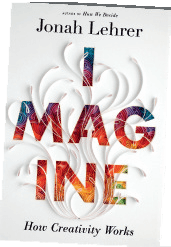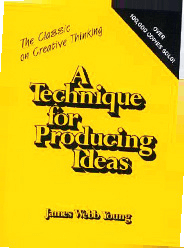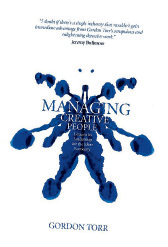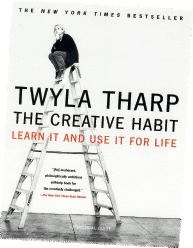Ideas aren’t us
Since ideas are the currency of our industry, there is great interest in how we can encourage their generation, especially by those members of the team who aren’t actually labelled ‘creative’. After all, so the mantra runs, ideas can come from anywhere.
The difficulty is that describing the way in which ideas are created is like trying to explain how to dance: at some point, the choppiness of language fails to express the fluidity of the art.
That hasn’t stopped people trying; ‘how to’ books on creativity are perennial big-sellers on Amazon’s business list (see panel). Far and away the best of them, however, is still A Technique for Producing Ideas, the slim, sane classic written by James Webb-Young.
The book outlines a five-step process that creative people go through in the generation of ideas, even if they are not actually aware of doing so. Since much of this process apparently consists of doing nothing, it goes some way to explaining the mystique that attends creative departments.
The first step is ‘gathering raw material’. Creative people do a surprising amount of this, leading on to step two – playing with it, freely exploring its properties and relationships. The fun bit.
Step three is the one that the amateurs just don’t grasp. It is to think about something else, to walk away from the task, to allow the unconscious mind time to do its silent work.
In step four, the idea appears obligingly to pop up from nowhere – but that is an illusion; the unconscious mind has offered it up.
There is no shortage of authors offering advice on creativity and how to do it. Amazon lists more than 9,000 titles on the subject, including the following:

Imagine: How Creativity Works (Jonah Lehrer). Just published, this claims to be ‘the story of how we imagine’. Lehrer takes us on a neurological tour of Bob Dylan’s brain, before arguing that creativity can be achieved via a set of thought processes everyone can use.

A Technique for Producing Ideas (James Webb-Young). Published in 1939, and written by an adman, it is considered by many creative professionals to be the most insightful tome on how to generate ideas.

Managing Creative People: Lessons for Leadership in the Ideas Economy (Gordon Torr). In this beautifully written treatise on why creative people are different, the former JWT global creative director argues that true creativity is often confused with the simpler, more linear, task of problem-solving.

The Creative Habit: Learn it and Use it for Life (Twyla Tharp). The US choreographer contends that we can all make creativity part of our life if we make it a habit. She duly offers 32 exercises to help.
A mere glance at this list is enough to show why those ‘everyone-is-creative’ workshops don’t have a hope of fulfilling expectations.
The very team members who normally revel in process abandon it now, leaping straight to step four and seeking to develop ideas with the conscious mind.
The results are tepid and tame, but that doesn’t stop their originators falling in love with them, encouraged by the rest of the group, who are forbidden to criticise. There is never any step five.
It is why you can always spot the true creatives in the room, no matter how dress-down-Friday everyone else has elected to be. They are the silent, sulky ones, painfully aware that the group expects fireworks, but reluctant to offer up anything that has neither enjoyed unconscious rumination nor will benefit from the rigours of tough evaluation.
It’s time we abandoned this myth that ideas can come from anywhere. A casualty of the limitations of language, it is true only in the same way that a person with no rhythm who lurches across the floor can be said to ‘dance’.
Perhaps, like the Eskimos and their snow, we need to have 200 words for ‘idea’, to delineate the gradations between predictable pap at one extreme and Cannes Gold at the other.
Anyone can come up with the former; only a tiny few will ever give birth to the latter. It would save a great deal of time and embarrassment all round if we could simply accept that.
